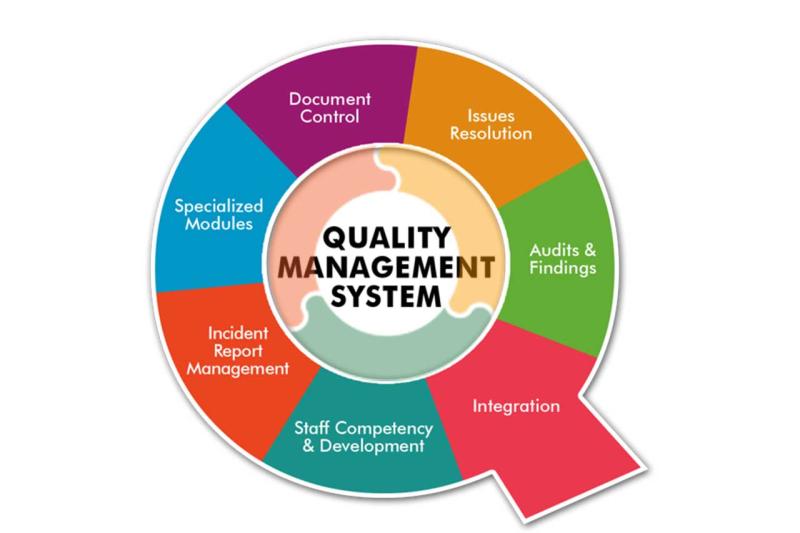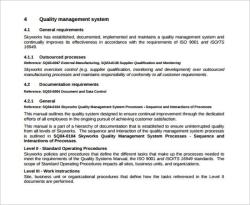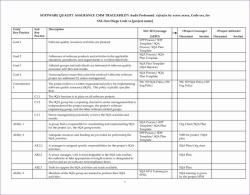What is the quality management system?
A Quality Management System (QMS) is a structured framework designed to manage and improve an organization's quality of products, services, processes, and overall performance. It's a systematic approach that helps companies ensure consistency, meet customer expectations, and continuously enhance their operations.
Key components of a QMS typically include:
Quality Planning: Establishing quality objectives and processes needed to deliver products or services that meet customer requirements.
Quality Control: Monitoring and ensuring that products or services meet predefined quality standards through inspections, testing, and corrective actions.
Quality Assurance: Implementing systematic activities to ensure that quality requirements are met throughout all stages of production or service delivery.
Documentation and Record-Keeping: Maintaining detailed documentation of processes, procedures, specifications, and quality records to ensure traceability and compliance.
Continuous Improvement: Implementing methodologies like Lean, Six Sigma, or Kaizen to continually enhance processes, reduce waste, and improve efficiency and quality.
Customer Focus: Placing a strong emphasis on understanding and meeting customer needs and expectations.
Training and Development: Providing necessary training and development programs to empower employees with the skills needed to maintain and improve quality.
QMS frameworks like ISO 9001 provide guidelines for establishing, implementing, maintaining, and continually improving a QMS. These standards help organizations ensure that their products and services consistently meet customer and regulatory requirements while aiming for process optimization and continual improvement.
Quality on Lock: Understanding Quality Management Systems
A quality management system (QMS) is like a fortress protecting your organization's reputation, efficiency, and customer satisfaction. It's a structured framework that ensures consistent quality in all your operations, from product development to customer service.
1. The Essence of Quality: Defining a QMS
A QMS can be defined as:
- A set of interconnected processes, policies, and procedures: These elements work together to achieve specific quality objectives and meet customer expectations.
- A focus on continuous improvement: It's not just about maintaining the status quo; it's about constantly striving for better ways to do things.
- Customer-centric: Understanding and exceeding customer needs and expectations is at the core of a QMS.
- Data-driven: Evidence and analysis guide decision-making and improvement efforts.
2. Building the Fortress: Implementing a QMS
Implementing a QMS might seem daunting, but it can be broken down into manageable steps:
- Planning: Define your quality goals, identify stakeholders, and choose a suitable QMS framework (e.g., ISO 9001).
- Documentation: Create clear policies, procedures, and work instructions to guide employees.
- Training: Educate and empower employees to understand and contribute to the QMS.
- Implementation: Integrate the QMS into your existing operations and processes.
- Monitoring and measurement: Regularly assess performance against quality objectives and identify areas for improvement.
- Continuous improvement: Use feedback and data to refine your QMS and adapt to changing needs.
3. The Bricks and Mortar: Components of a QMS
A QMS is built on several key components:
- Leadership commitment: Top management actively supports and promotes the QMS culture.
- Customer focus: Understanding and exceeding customer needs drives all decisions.
- Process management: Clearly defined and controlled processes ensure consistent quality outputs.
- Resource management: Allocate necessary resources (people, equipment, training) to achieve quality goals.
- Measurement and analysis: Data is used to track performance, identify issues, and make informed decisions.
- Continuous improvement: A culture of learning and adaptation fosters ongoing progress.
Remember, a QMS is not a one-size-fits-all solution. It's about tailoring the framework to your specific organization and needs. By embracing these principles and building a robust QMS, you can create a culture of quality that permeates every aspect of your operations, leading to success and customer satisfaction.





